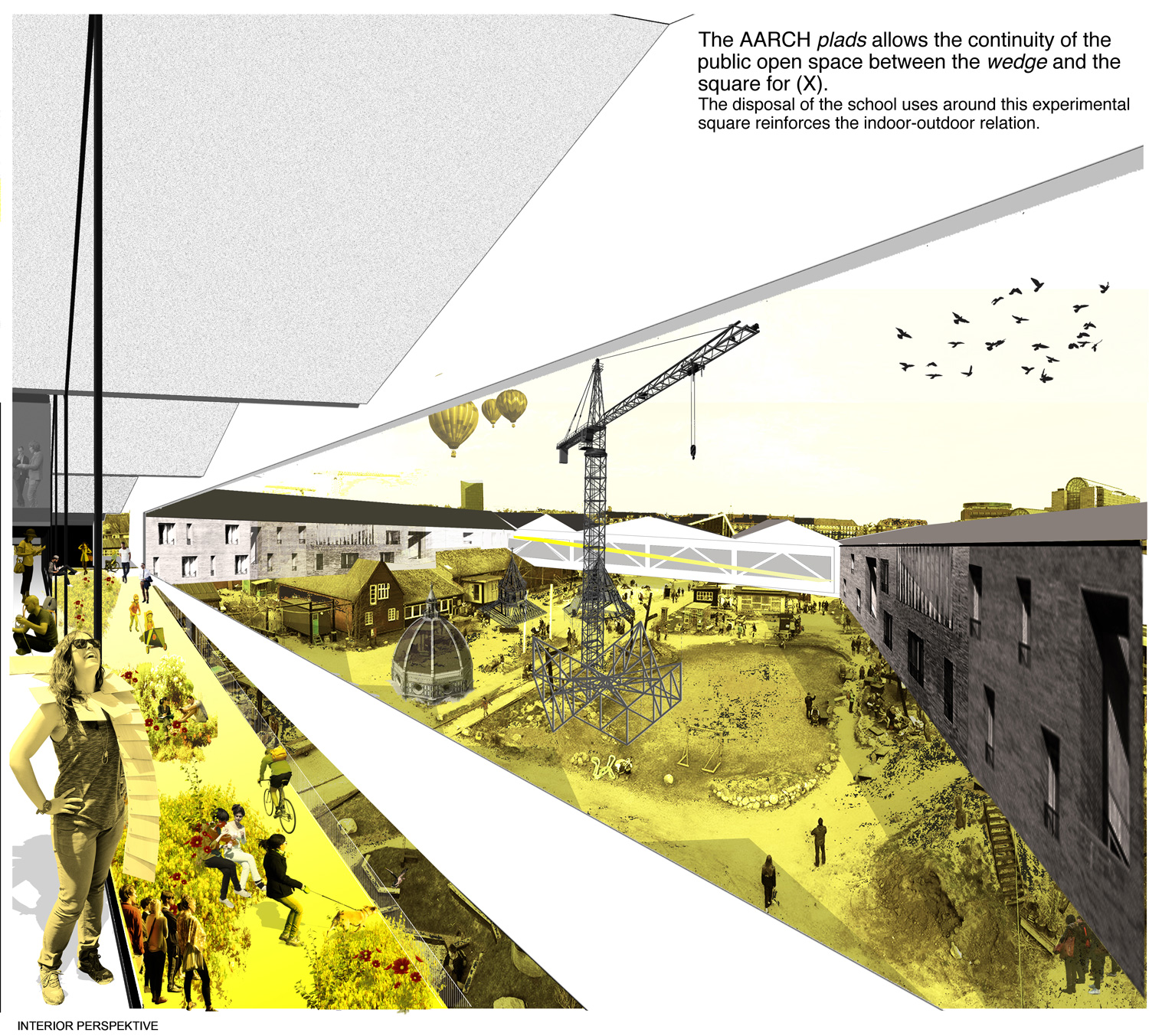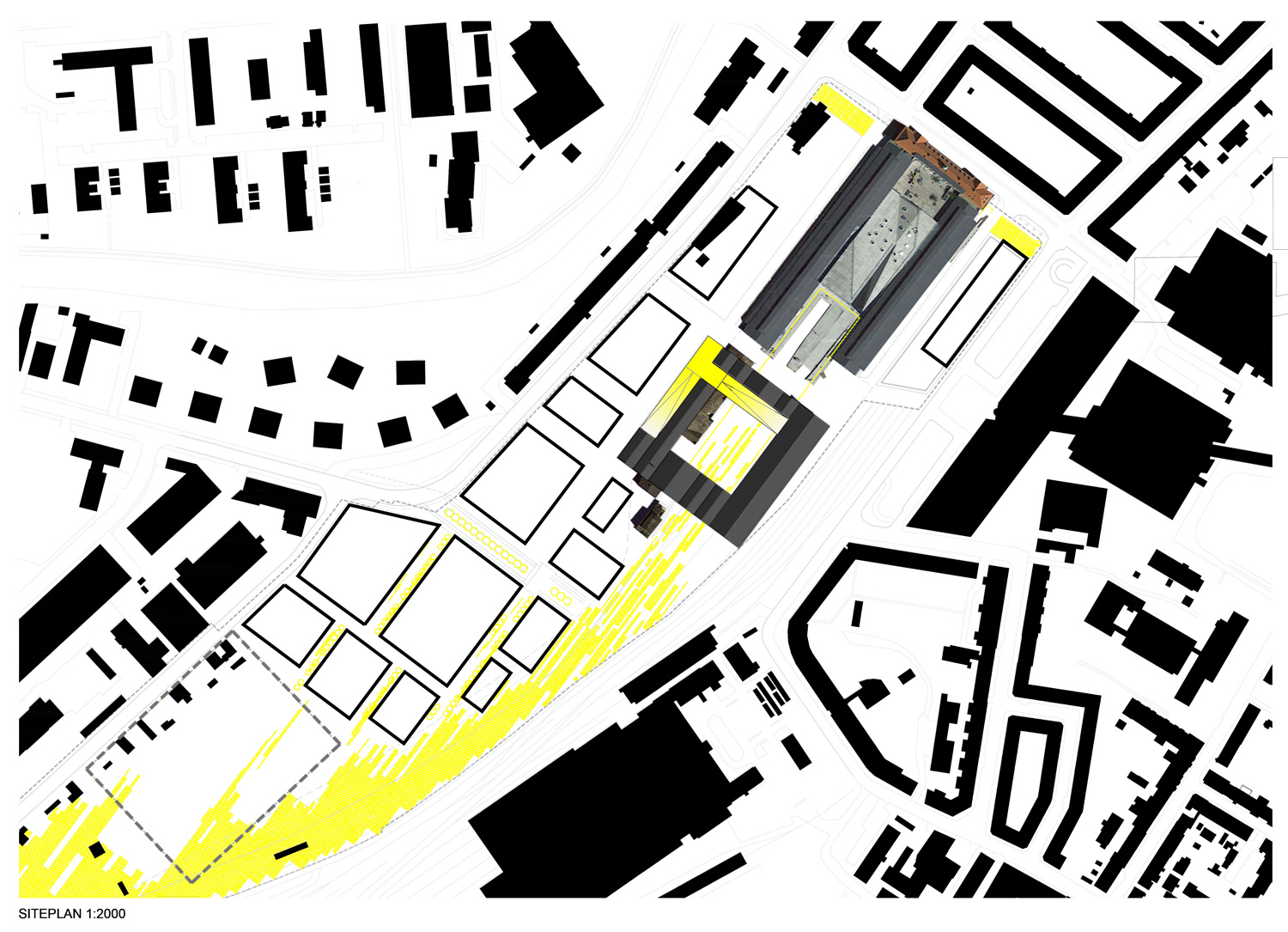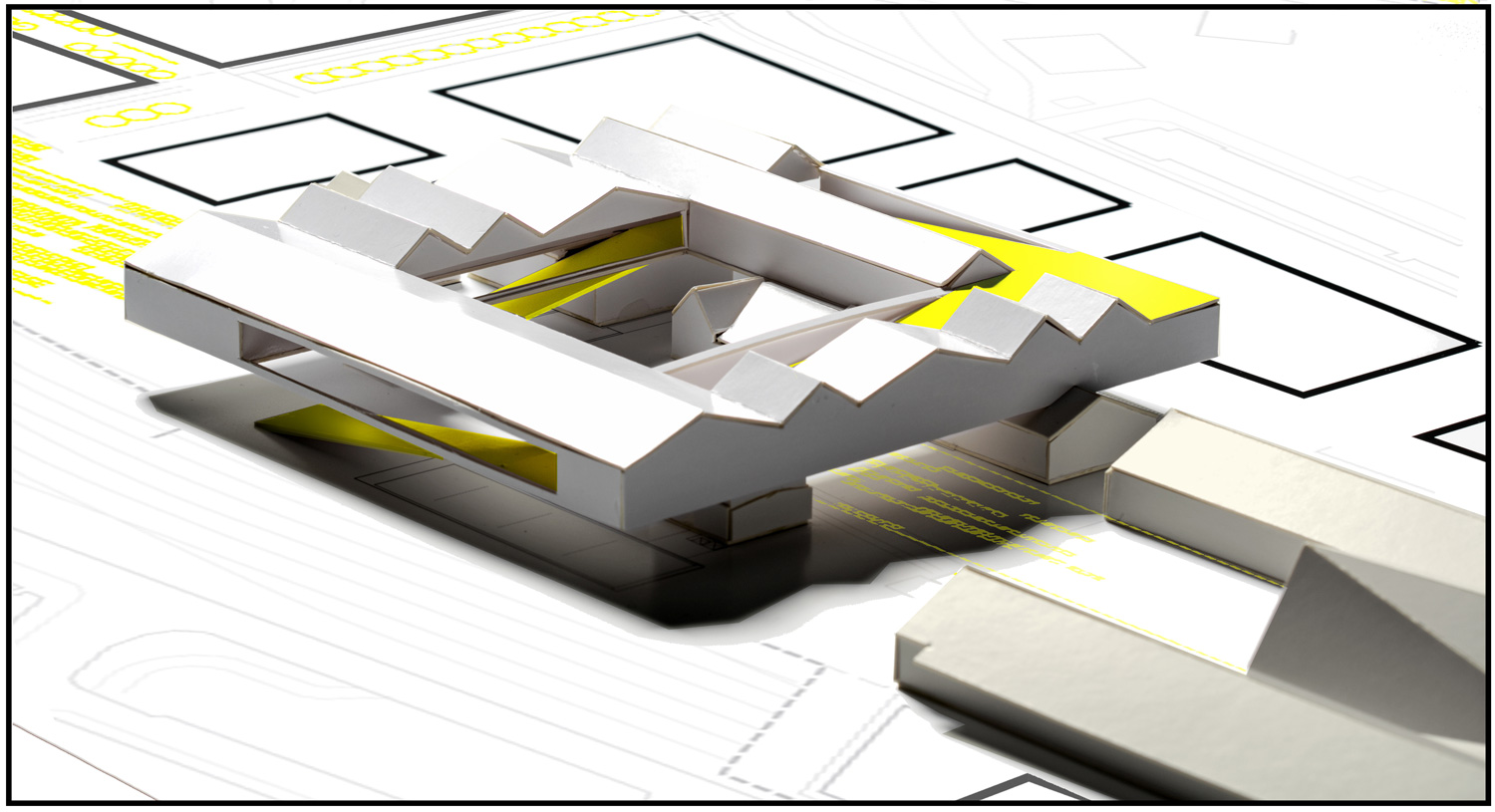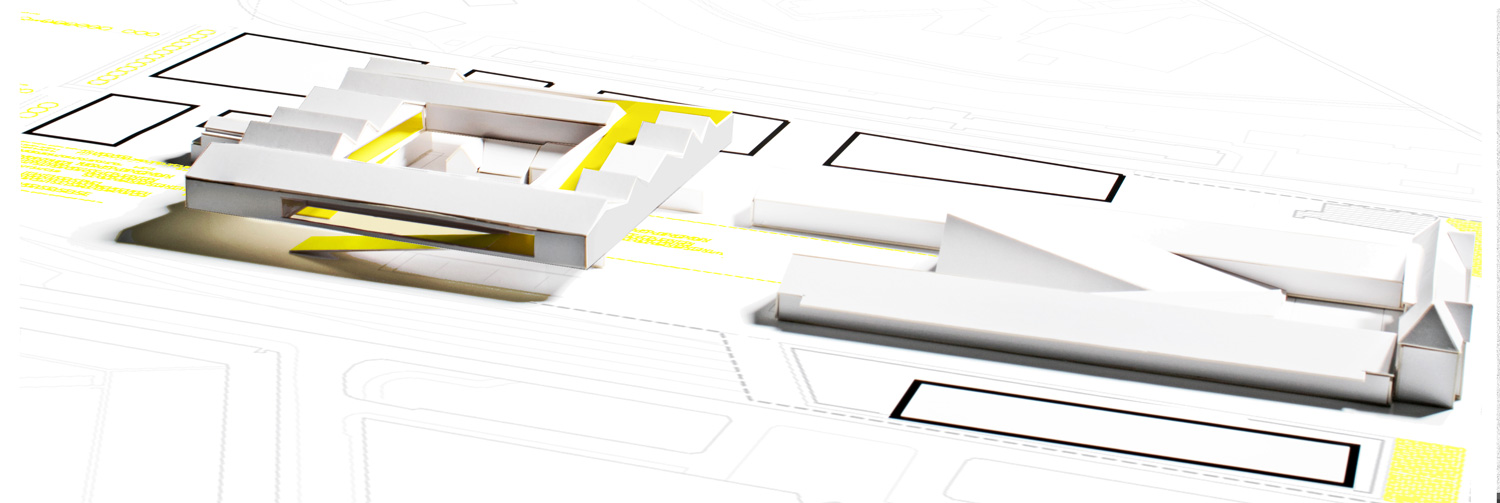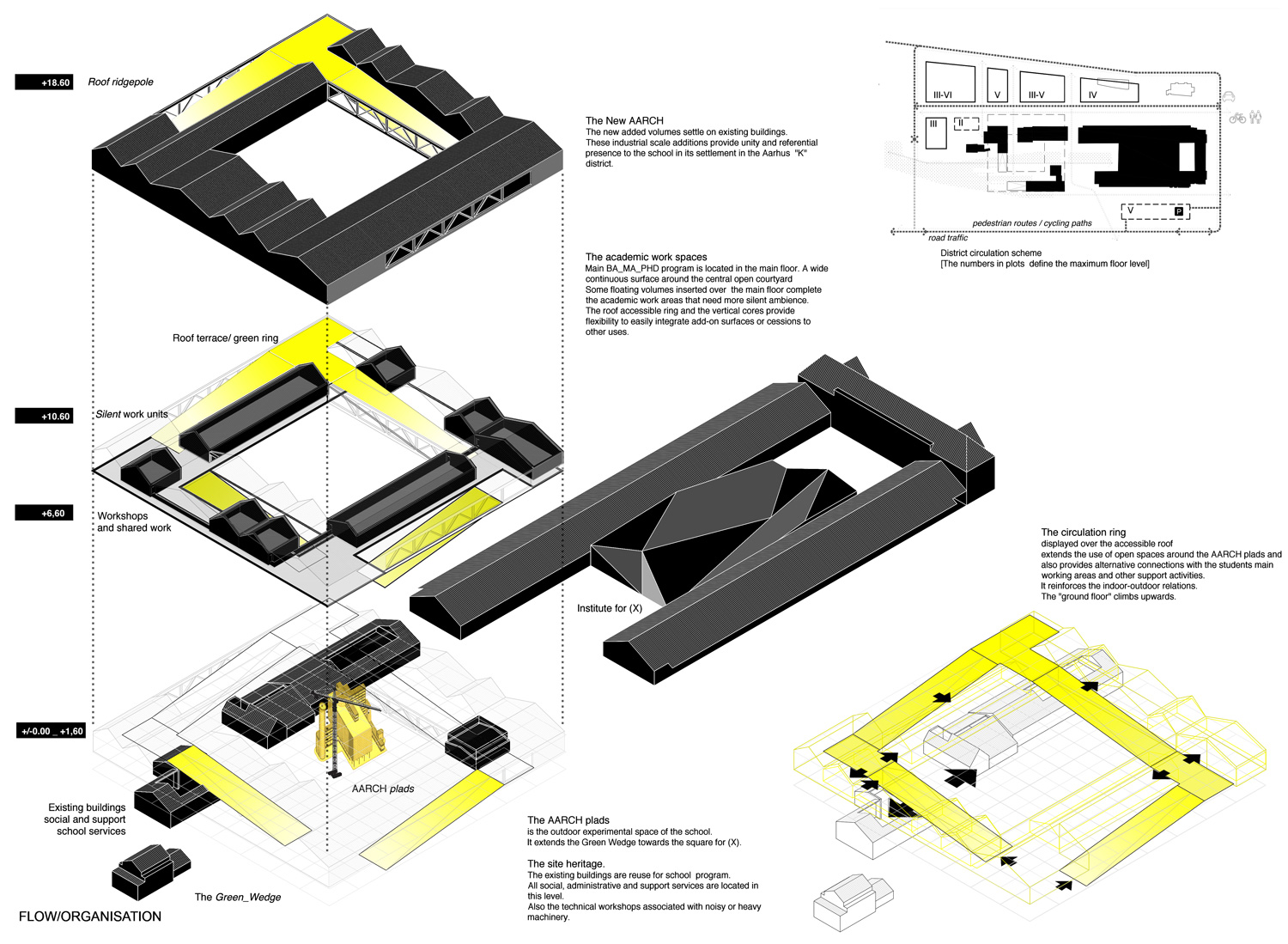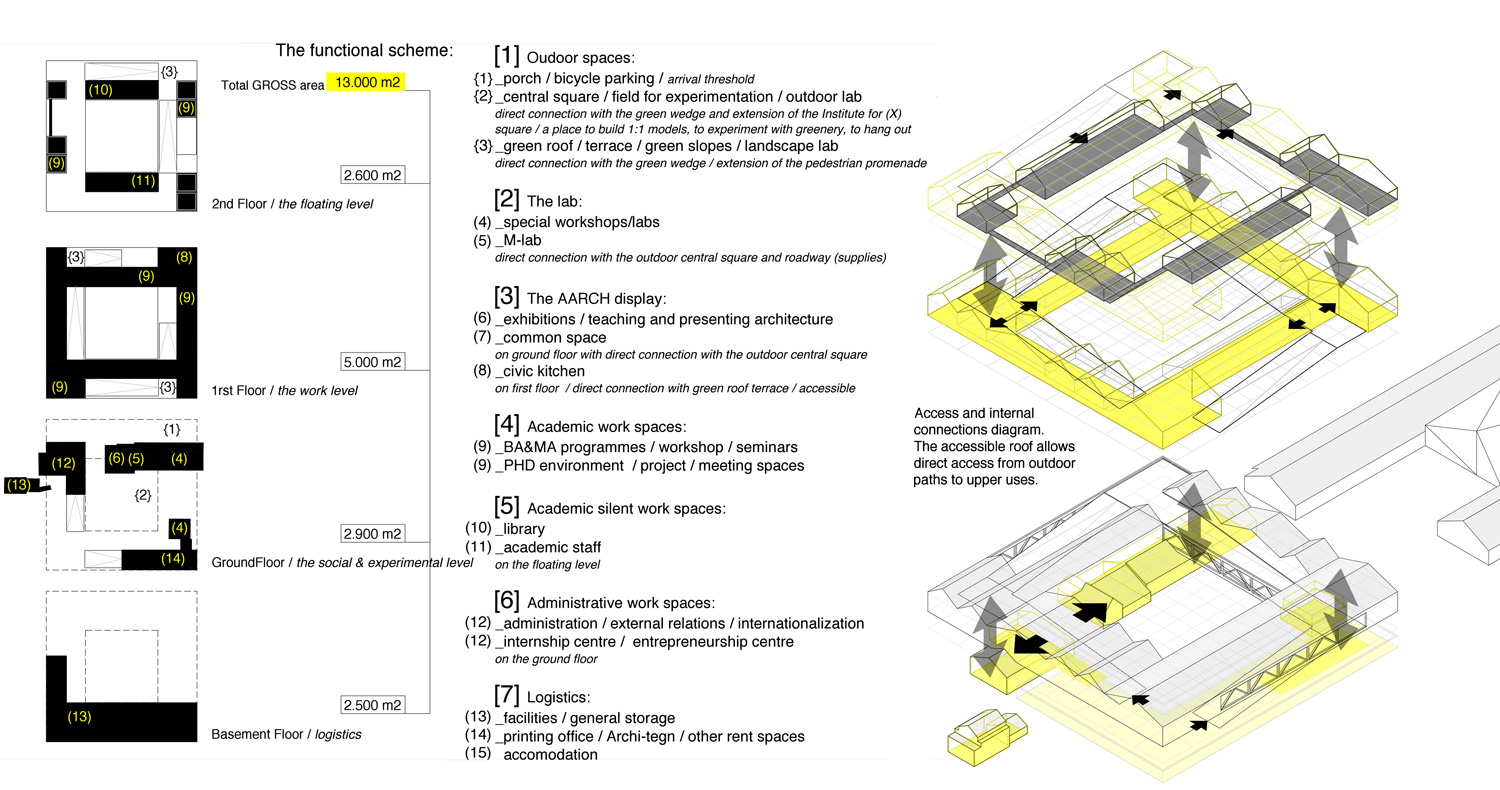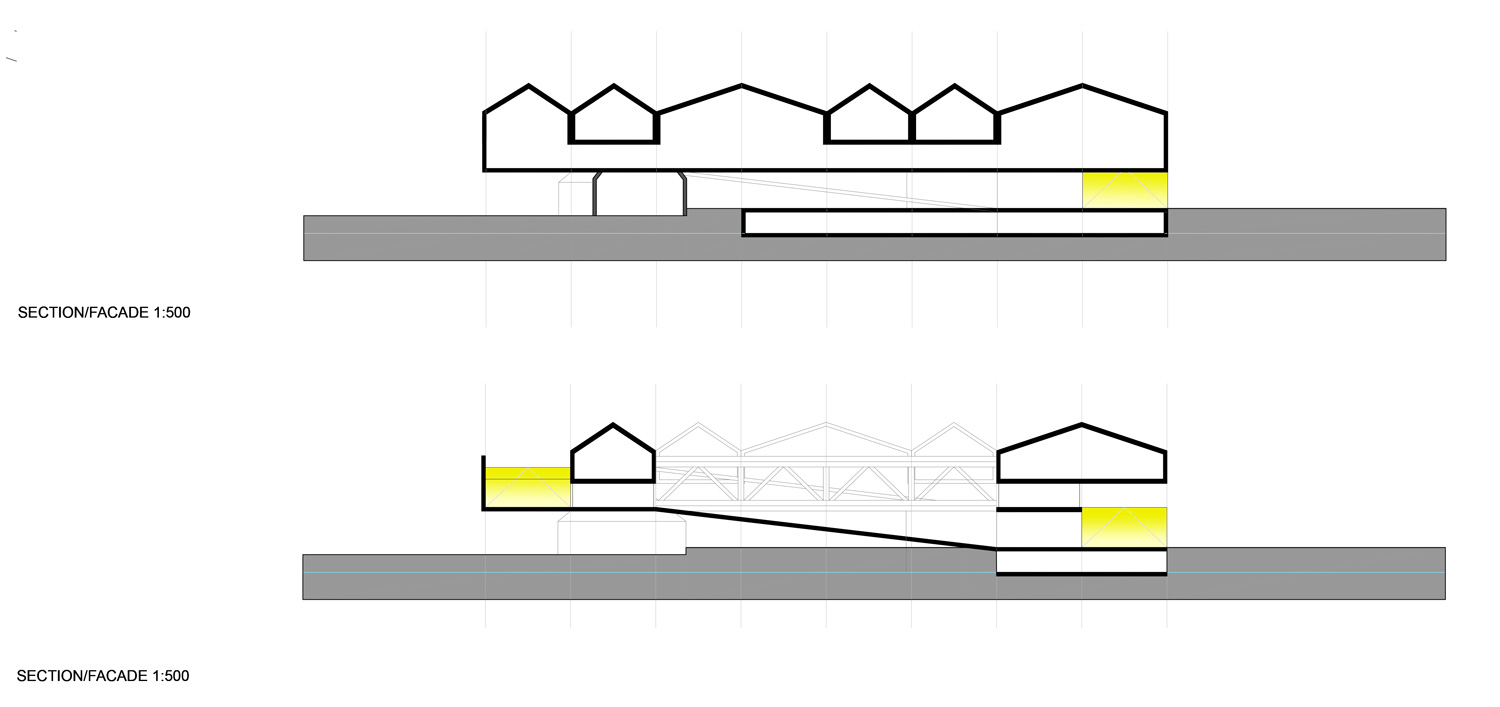1488-AZA-AAR.DK-2016
Client: Aarhus School of Architecture
Status: Competition (2016)
Clasification: Selected
Location: Aarhus, Denmark
Coordinates: 56.152392, 10.191978
Climate: Continental, Temperate
Material: Undefined
Environments: Park, Railway, Urban
Visualizer: Studio
Scale: Large
Types: Education, University
The first step in the transformation of the area has been taken with the settlement of the Institute for (X) in the former goods buildings. The site with its industrial heritage has its own character, informal, open, inclusive and experimental.
The contribution of the New AARCH to build «a new vibrant, youthful urban district with an interest in experimentation» requires preserving the site identity with an industrial past and untamed ambience. The principal valuable elements for integration are:
– The green wedge
– The Institute for (X)
– The existing and the new urban structure
– The mood of the Aarhus K district
The location of the New AARCH in the southeast border of the proposed area, facing the Institute for (X) takes advantage of the two main site references, the cultural institution and the green wedge. The close link established between the green wedge and the facilities reinforces the presence of these institutions and encourages the participation in its activities. The message is the sense of common belonging over de New AARCH and by extension over the architecture itself that is taught there.
The task is to define a design permeable enough as to be crossed naturally.
The green wedge extends its open spaces and greenery over the roof ramps.
The ground floor is open to the pedestrian route.
The activity of the school spreads over.
The design process concepts are:
– In the open. The architectural experience is shared by the community and the students. Architecture is a wide subject that concerns to every citizen. Both social community and scholar community should share the visions that contribute to build a solid common identity.
An open facility contributes to make visible the scholar work and to keep eyes open towards the city for the on going studies and investigations.
It encourages inclusiveness by easy access and friendly use. The more activity is shown, the rising contribution to enrich the borough innovation is performed.
– Experimentation. The New AARCH as a testing field. Theoretical and also physical. Proper indoor spaces complemented by varied outdoor areas that allow to develop diverse essays and experimentations in a wide range of subjects related with landscape, constructions, urban art, performing activities…
– Flexibility. Related with adaptability. A design with large open heights to enable the insertion of new intermediate levels. A wide regular surface with generous facade ratio to ensure its utility for the decided current use and other different to come.
Related with reuse. A regular design balanced between the specificity of the geometry and the qualification of the space in order to satisfy presents needs and be open to future changes.
Related with reprogramming. Strategic connections will allow to segregate parts of the program to independent reuse or to add on new surfaces maintaining the unity character of the building.
The proposed New AARCH is a hybrid between:
– Architecture and landscape. Outdoor spaces are as protagonists as the indoor closed surfaces in the functional scheme. The extension of the AARCH activity towards outdoors makes visible the facility and contributes to its integration with the Institute for (X). The green wedge passes through the New AARCH ending in the (X) square as the railroad tracks did in the past. The cultural and the educational institutions become a pole of activity in the starting point of the green axis.
– Industrial and domestic architecture. The influence of the industrial past of the site is assumed as a valuable condition. The scale, the wide range structure are adopted for the new building. At the same time some insertions of small scale serve as counterpoints to define a diverse cosmos to accommodate various functions.
– Old and new. All the existing buildings and many other urban elements are integrated in the new definition of the AAA. The site architectural heritage is assumed as a root element. Maintaining and integrating the traces of the past becomes the first architectural lesson.
– The classical typology and new models. The school scheme is arranged in a cloister base type. This basic scheme is completed with an open ground floor plan, partly accessible roof, overlapping of new structures above existing buildings…
– Permanent and ephemeral. Both conditions contribute to support the program.
Perfectibility
It is also related with the flexibility and resilience for future changes. The proposed scheme is an open structure.
The definition of a permanent raw base to develop a perfectible building is on the task.
– Budget requirements, the contribution of new funds can change the perspective about the total gross conditioned surface, about the technical facilities to be plumb in…
– New ways of relation at work, new professional demands can change our vision about the training career and the way the architectural higher education is improved. The direct consequences will be new requirements of qualification of the available spaces.
– Certain changes on students demand can convert the building in a too large or too tight school. Adds-on of new areas without loosing the unity and functional attributes should be as straightforward as loaning out surfaces for other compatible and independent uses.
– New technologies and sustainability measures
This perfectibility can easily be developed with:
– a raw large span structure with optimized foundations
– relatively wide heights
– sufficient amplitude to expansion of technical facilities
– certain level of prefabrication on facades and divisions
– proper provision of main access and service access
– users participation.
The contribution of the building users improves the design and also serves to the progressive adaptation to changes in the useful life of the building. In this concrete case it should even be seen as a testing ground for the on-going teaching and investigations.
Therefore the facade and interior fittings can be understood as interchangeable elements with constantly mutating option.
Urban grid / Aarhus K district mood /New AARCH’s contribution
– Open space. The surrounding open space of the New AARCH is defined by the site heritage. The integration of all existing buildings ensures a natural presence on the site.
The permeability of the ground floor:
– multiplies the visual relations
– recreates a sort of microcosm, a borough inside the borough
– allows the continuity of the public open space between the green wedge and the (X) square
– connections are generated without physical limits but delimiting the boundaries of the school influence area clearly
– The new urban grid accompanies the New AARCH scheme by adapting the occupation scale to the pre-existence. The Institute for (X) and the New AARCH define together an axis that is completed by other small-scale volumes. This cultural axis breaks up into the green park.
Other main multifunctional plots (with retail, offices, residential uses) are display along the west axis. The location of the parking plot is proposed in the northeast end connected to Skovgaardsgade and Sonnesgade. The aim is to reduce internal road traffic and locate the parking in this transitional site, closed to the railroad end and facing the blind facade of the congress centre.
The proposed grid is deliberately dense in soil occupancy on the Carl Blochs gade alignment. This ratio emphasizes the public green open axis + cultural facilities axis and contributes to generate vibrant life along the new street with its ground floor activities.
